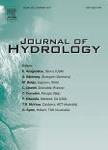版权所有:内蒙古大学图书馆 技术提供:维普资讯• 智图
内蒙古自治区呼和浩特市赛罕区大学西街235号 邮编: 010021

作者机构:Georgia Inst Technol Sch Civil & Environm Engn Multimedia Environm Simulat Lab Atlanta GA 30332 USA Pamukkale Univ Dept Civil Engn TR-20070 Denizli Turkey
出 版 物:《JOURNAL OF HYDROLOGY》 (水文学杂志)
年 卷 期:2007年第343卷第3-4期
页 面:240-253页
核心收录:
学科分类:08[工学] 0708[理学-地球物理学] 081501[工学-水文学及水资源] 0815[工学-水利工程] 0814[工学-土木工程]
基 金:FABED Fevzi Akkaya Scientific Activities Supporting Fund
主 题:inverse problems parameter estimation groundwater modeling kernel based fuzzy c-means clustering zone structure genetic algorithm
摘 要:In this study, we propose an inverse solution algorithm through which both the aquifer parameters and the zone structure of these parameters can be determined based on a given set of observations on piezometric heads. In the zone structure identification problem, kernel-based fuzzy c-means (KFCM) clustering method is used. The association of the zone structure with the transmissivity distribution is accomplished through a coupled simulation-optimization model. In the optimization model, genetic algorithm (GA) is used due to its efficiency in finding global or near global optimum solutions. Since the solution is based on the GA procedures, the optimization process starts with a randomly generated initial solution. Thus, there is no need to define an initial estimate of the solution. This is an advantage when compared to other studies reported in the literature. Further, the objective function used in the optimization model does not include a reference to field transmissivity data, which is another advantage of the proposed methodology. Numerical examples are provided to demonstrate the performance of the proposed algorithm. In the first example, transmissivity values and zone structures are determined for a known number of zones in the solution domain. In the second example, optimum number of zones as well as the transmissivity values and the zone structures are determined iteratively. A sensitivity analysis is also performed to test the performance of the proposed solution algorithm based on the number of observation data necessary to solve the problem accuratety. Numerical results indicate that the proposed algorithm is effective and efficient and may be used in the inverse parameter estimation problems when both parameter values and zone structure are unknown. (C) 2007 Elsevier B.V. All rights reserved.